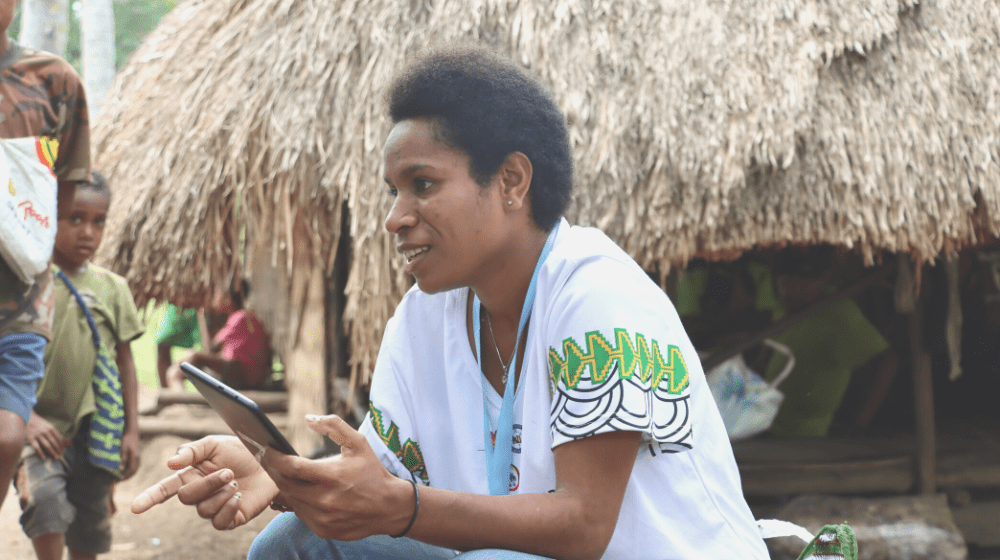For remote communities in Papua New Guinea’s most populous province, basic health care is out of reach. As a team of survey collectors discovered, even a simple first aid kit can be a great relief.
“These people take 13 hours to reach their nearest health centre,” said Miriel, supervisor of a team of enumerators who were conducting the national Socio-Demographic and Economic Survey in remote communities in Morobe. “The geographical location means walking up and down mountains. They have burial sites along the road because while they take people to the centre, patients die along the way. They just bury them along the road.”
The community Miriel was speaking of lives in remote Morobe. The survey team was only able to reach the area by helicopter. While her and her team were excited for the helicopter trip, the distance and geography made clear the stark disparities between urban and rural communities.
“We were engaging with these people from the most remote areas and they are missing out on so many things,” said Miriel. “Basically, all those basic services they should have access to, they have missed out on.”
Six Capsules, One Community
The urgent, local demand for health care was apparent to Miriel and her team the moment they landed.
“We went to this community with a few bits of medication and we found out these people didn’t have any access to medication.”
The team’s basic first aid kit, provided for small emergencies that may happen in the remote areas, was a rare opportunity for the community.
“I saw a child with a lot of sores,” says Miriel. “So I took one of my amoxycillin capsules and I felt so bad for this child so I offered that. Then, the whole village came along to try and get that medicine from me and I only had six capsules.”
Miriel’s experience, and the stories she heard from the villagers, demonstrates that these communities want access to modern medicines. Importantly, they want these services available in their own communities, not 13 hours away.
“From the concerns we received from these people themselves, they want services - basic services - to be established in that area.”
Putting Theory into Practice
Miriel joined the Socio-Demographic and Economic Survey while majoring in statistics. She is one of 466 enumerators from around Papua New Guinea who have been trained by the National Statistical Office to conduct questionnaires across 5,000 households, gathering information on household size, education, health, access to water, and energy sources.
“When I got involved in this program, I had only done theory,” said Miriel. “Now I’m here in the field and I’m very excited to be a part of it.”
Fellow enumerators Billy and Eribieng joined a team from UNFPA, NSO and the Australian Bureau of Statistics to visit two locations surveyed in urban Lae. While these communities are closer to health care services, the survey team was eager for these resident’s experiences to be counted, and to have these conditions addressed in planning.
“Doing this survey can actually give us important information on the demographic characteristics of our urban and settlement communities,” said Billy.
Eribieng agreed, “When we have this data and we can give it to planners, they can make plans and budgets based on the needs and wants of the people in the community.”
29 communities in Morobe were surveyed in early June, with approximately 15 households in each community participating in the survey. Results will be available in early 2023.
About the Population Data Project
The Population Data Project is an initiative of the National Statistics Office (NSO) with support from the United Nations Population Fund (UNFPA) and the Australian Government. This project includes a Socio-Demographic and Economic Survey. This survey of 5,000 households across 335 communities will provide updated information on education, literacy, families, sources of water and energy, and household characteristics to inform strong planning for a strong Papua New Guinea.


